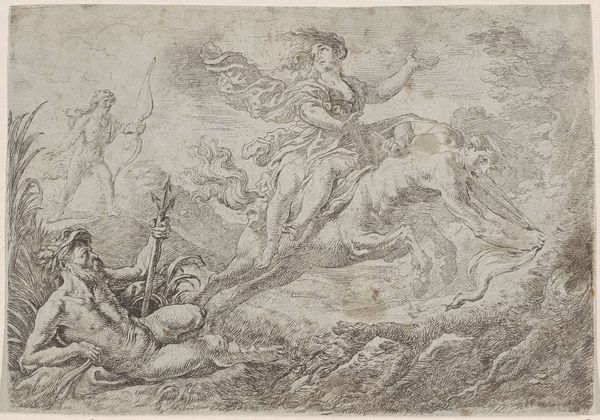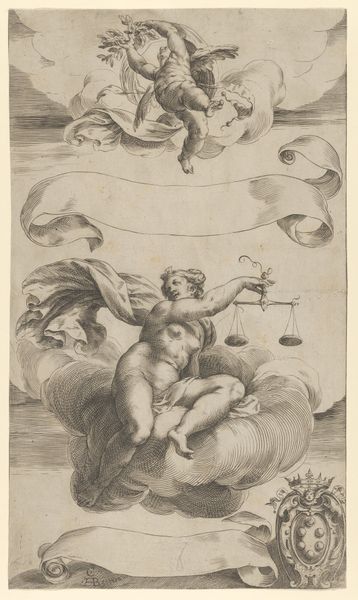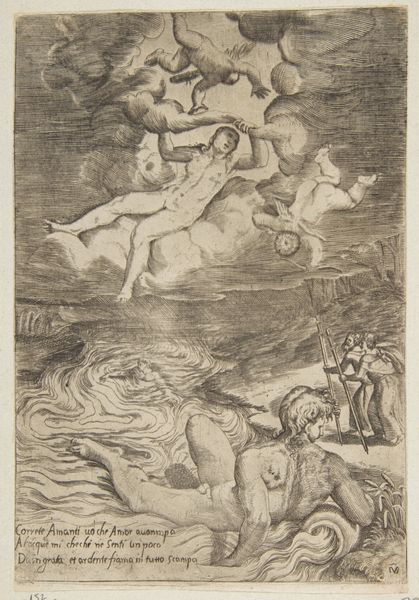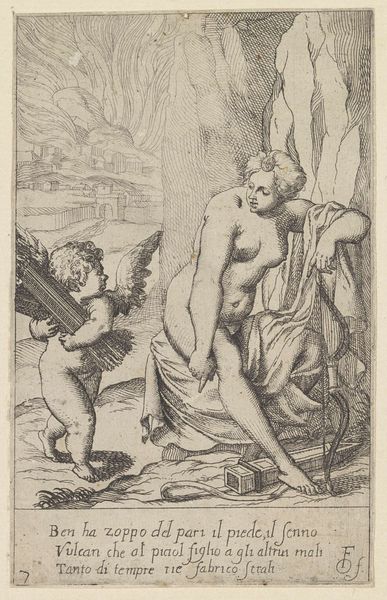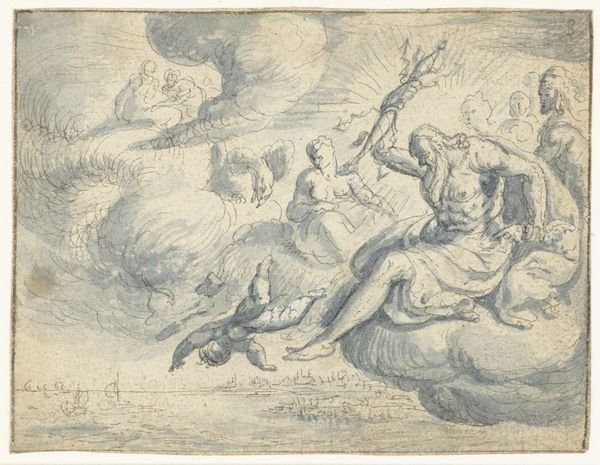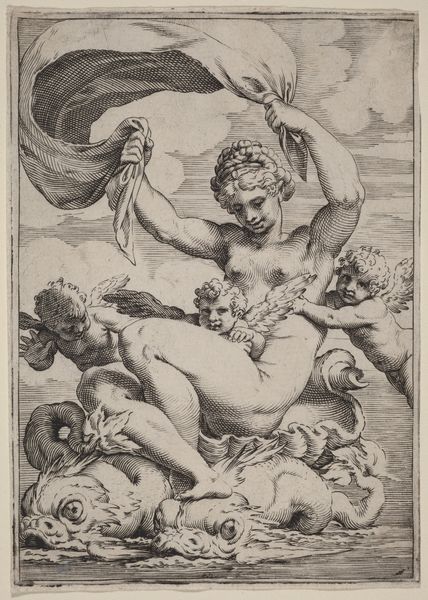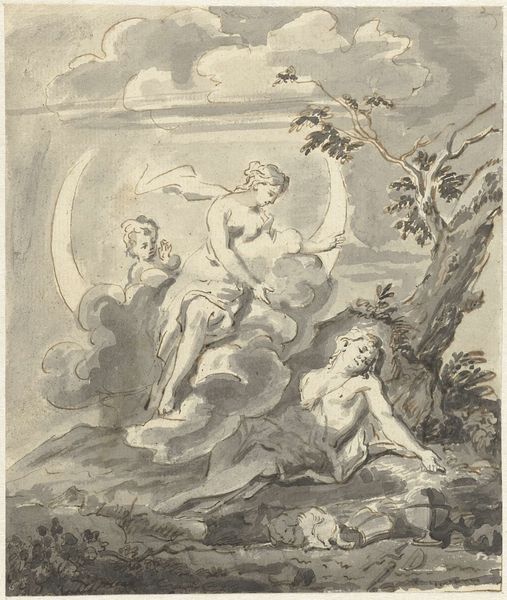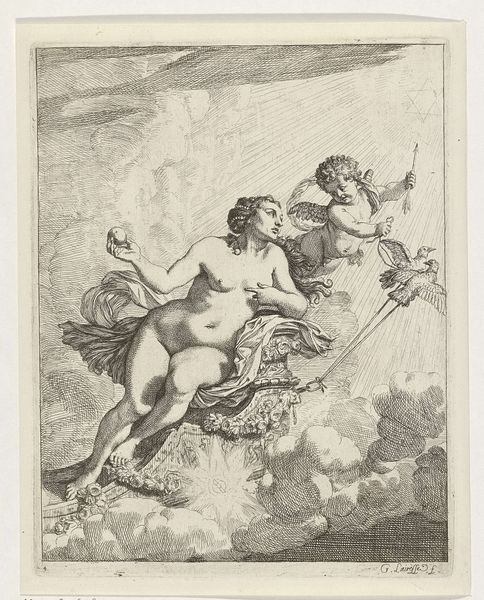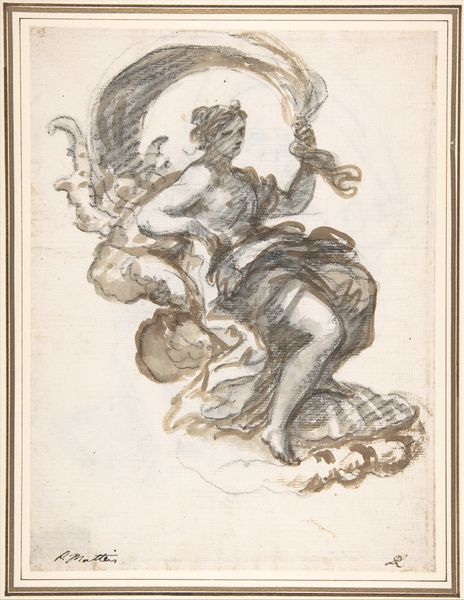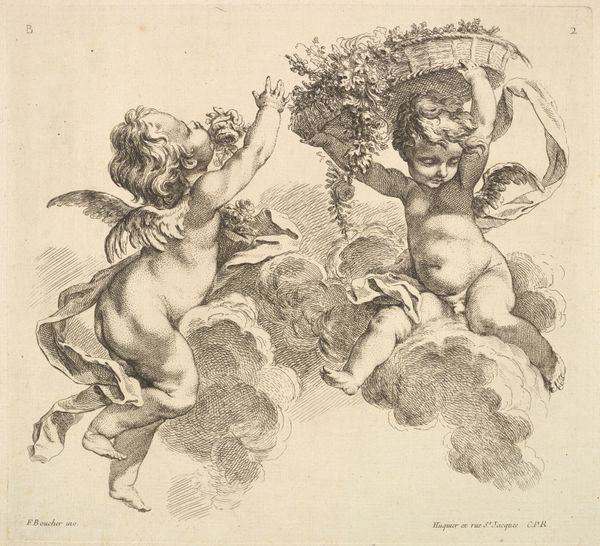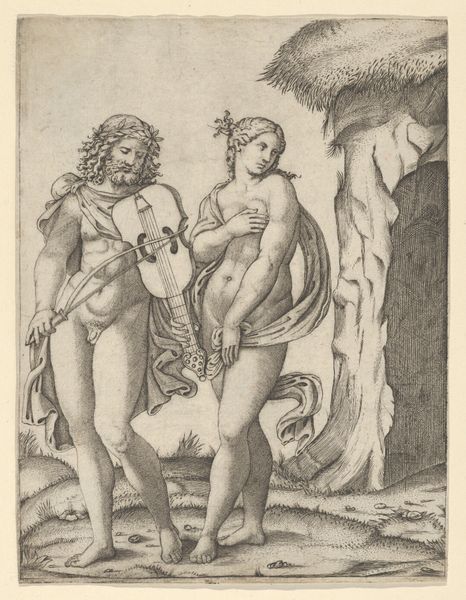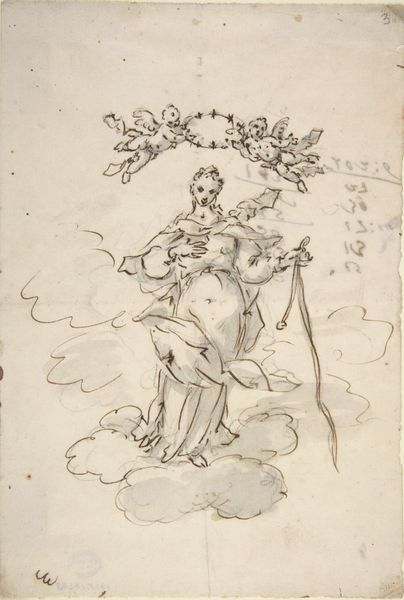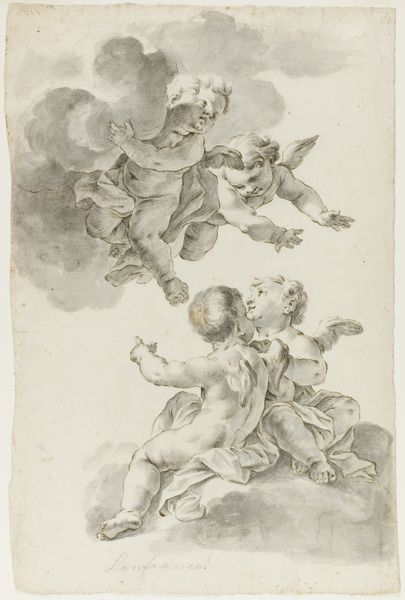
drawing, coloured-pencil, paper, ink, pencil
#
drawing
#
coloured-pencil
#
allegory
#
baroque
#
charcoal drawing
#
figuration
#
paper
#
form
#
ink
#
coloured pencil
#
pencil
#
line
#
history-painting
#
nude
#
watercolor
Copyright: Rijks Museum: Open Domain
Curator: Let's take a look at this drawing by Hendrick van Beaumont titled "Triomf van Venus," created around 1696. It's rendered in ink, pencil, and coloured pencil on paper. Editor: My first thought is how ethereal yet weighty it feels simultaneously. The muted colour palette lends a dreamy quality, while the figure herself appears rather grounded, even earthy. Curator: Indeed. It’s an allegory steeped in Baroque aesthetics. Venus, the Roman goddess of love, beauty, and desire, is depicted in her moment of triumph. Note how she’s presented nude, a common trope within the historical gaze perpetuating objectification, even as she holds court in the heavens. This resonates with critical discourses about gender, power, and representation throughout history. Editor: The apple in her hand is a very old symbolic choice. One cannot miss how her dominance here is visually tied to ancient mythology. She's actively recalling the Judgement of Paris, but the softness in the overall design seems to mellow out this message. Also, cupid and his sharp, aimed arrow are almost like another emblem layered in that points toward passion's sometimes-painful piercing. Curator: Right, the drawing invites interpretations of divine triumph, but how do we grapple with the normalization and idealization of the nude female form within this celebratory context, especially knowing it contributes to persistent issues within society? Editor: That's fascinating because I wonder, does her gaze imply complicity, defiance, or merely acknowledgement of being watched, of being placed within a context where she exists purely for visual consumption? The imagery echoes far back, while those visual questions persist into contemporary ideas of beauty standards that might impact diverse perspectives differently. Curator: It really brings forward challenging but vital questions that art poses, even centuries after their creation. Works like this necessitate critical evaluation through intersectional lenses. Editor: And understanding symbolic meanings can become powerful to decode broader social and political concepts that still impact the perception of gender and power now. This image certainly carries more within it than meets the eye.
Comments
No comments
Be the first to comment and join the conversation on the ultimate creative platform.

